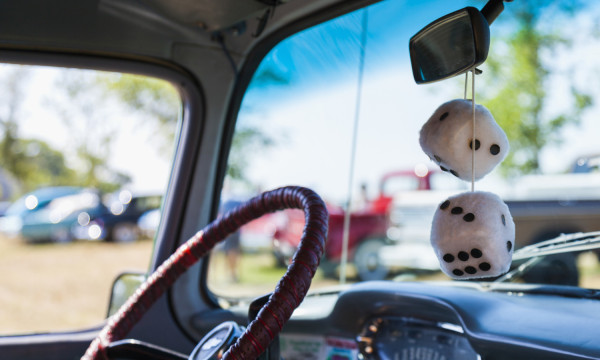The Weird Theory About The History Of Fuzzy Dice (And Why We're Skeptical) - SlashGear

Today, rearview mirrors are a ubiquitous part of every automobile. We're taught to check and adjust them to minimize blind spots in your car as an integral part of learning how to drive, but they've also become a convenient place to hang things. Over the decades, they've been an anchor for all manner of trinkets like air fresheners, baby shoes, garter belts, tiny disco balls, graduation tassels, COVID masks ... the list goes on. And yes, that list includes fuzzy dice.
The origins of these particular car ornaments are fuzzy at best and can't be pinpointed to a singular moment in history. Plus, no one has ever claimed to be the creator of the craze that swept the nation. Common folklore places the appearance of fuzzy dice sometime in the 1950s, but an issue of the Detroit Free Press from August 1999 said they were "a staple in hot rod magazines" as far back as the late 1940s. The timing here is crucial because it's most likely why fuzzy dice are directly associated with World War II fighter pilots.
This is very unlike the history of the rearview mirror itself. Back in 1909, an industrious auto engineer, businesswoman, and journalist by the name of Dorothy Levitt (Britain's first female race car driver ) wrote a book called "The Woman and the Car: A Chatty Little Handbook for Women Who Want to Motor." In it, she suggests carrying a small handheld mirror, preferably with a handle, to safely observe cars approaching from the rear. One source claims she actually used one during races as early as 1906 to see if other vehicles were quickly approaching and trying to pass her.